
South Australian Medical Heritage Society Inc
Website for the Virtual Museum
Home
Coming meetings
Past meetings
About the Society
Main Galleries
Medicine
Surgery
Anaesthesia
X-rays
Hospitals,other organisations
Individuals of note
Small Galleries
Ethnic medicine
- Aboriginal
- Chinese
- Mediterran
Limb prostheses
ACKNOWLEDGMENT: We are grateful to David and Maxine Ennis of the Repat. Museum and Chris MacLean of OPSA and prosthetist at the Repatriation General Hospital for their advice, comments and photographs.
The Oxford English Dictionary defines the word as derived from the Greek meaning “addition, to put to, or add”. It refers to surgical prostheses as “that part of surgery which consists in supplying deficiencies, as artificial limbs, teeth, or by other means”.
Artificial limbs are used to restore the function of a limb following an amputation. The first reference to a lower limb prosthesis some 3000 years ago is in the “Vedas” written in Sanskrit. It appears that Queen Fishplate lost her leg in a battle. Once the wound had healed it was replaced by an iron leg and it is said she returned to fight again.
Archaeologists have found artificial limbs in Egyptian burial sites and numerous such finds have been made in Europe before and after the birth of Christ.
Celsus about this time described the technique of amputation and vessel ligation. In the 16th Century (1510-1590), Ambrose Paré realised the life saving potential of amputation of a gangrenous limb and began developing prosthetic limbs.
The attempts to use atmospheric pressure to aid the attachment of a prosthesis to a limb dates to the 18 th. century. Most recent advances date from the Second World War. In the 1940s the suction sock was developed and in 1975 M. Martinez attempted to use heel springs and joints in order to improve mobility to near normal. Some centres use immediate post operative prostheses which are later replaced by the current models. The advances in technology and the development of plastics have resulted in further improvements.
In the past, war and other trauma, infection and congenital deformities were the major causes of amputation. The current causes of amputation are usually due to peripheral vascular disease, trauma or malignancy.
Not so long ago bone setters, splint and brace makers were active in trauma management and rehabilitation. The current appellation refers to Orthopaedic Surgeons and Orthotists.
In Adelaide the major Orthotic centre is at the Repatriation General Hospital which cares for the WW2 amputees and some of the early post WW2 prostheses are in the “ Repat Museum ” which is on the campus of the Hospital.
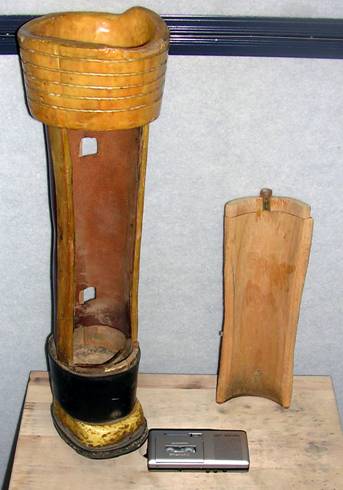
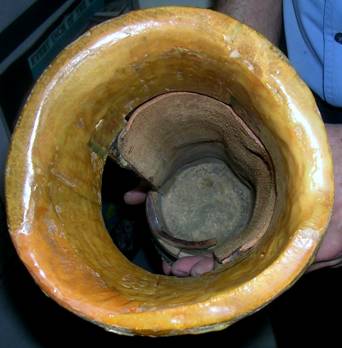
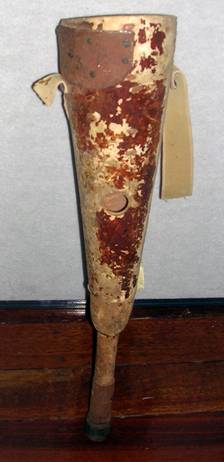
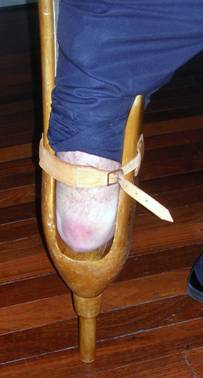
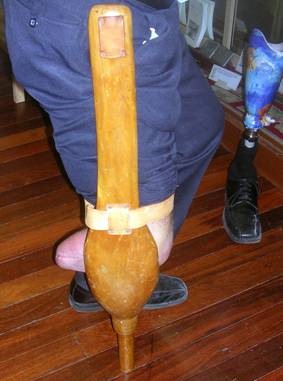
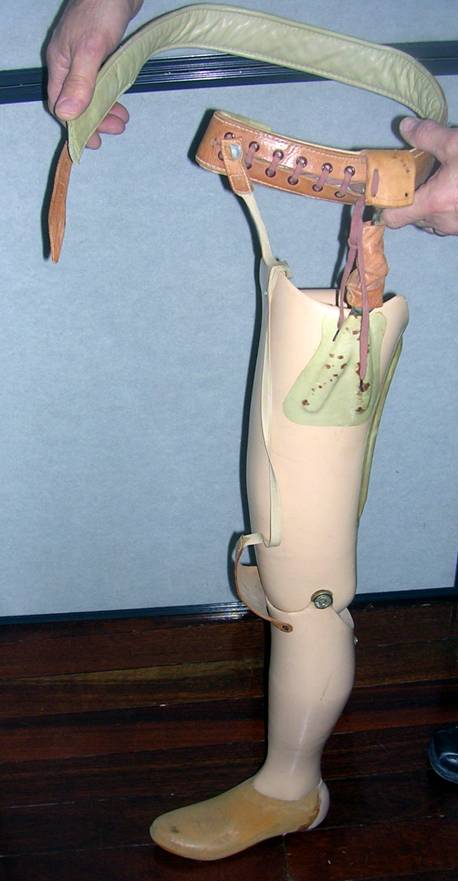
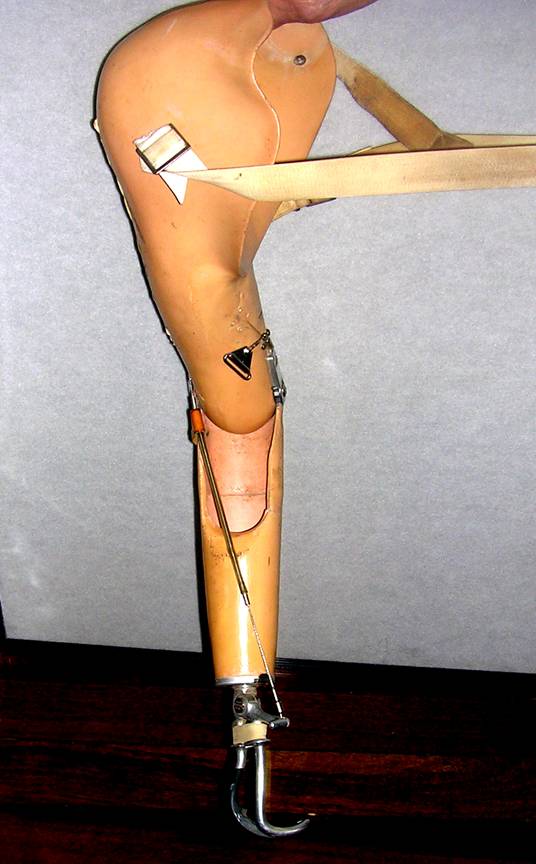
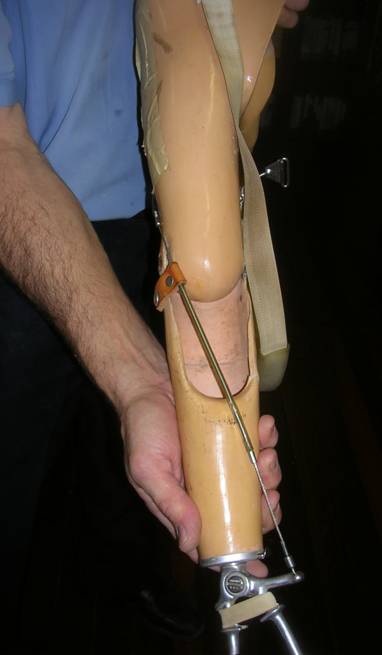
A closer view of the prosthesis: The elbow can be locked in various positions (above right) the hook can be rotated, the control cable and lever for operating the hook (below).
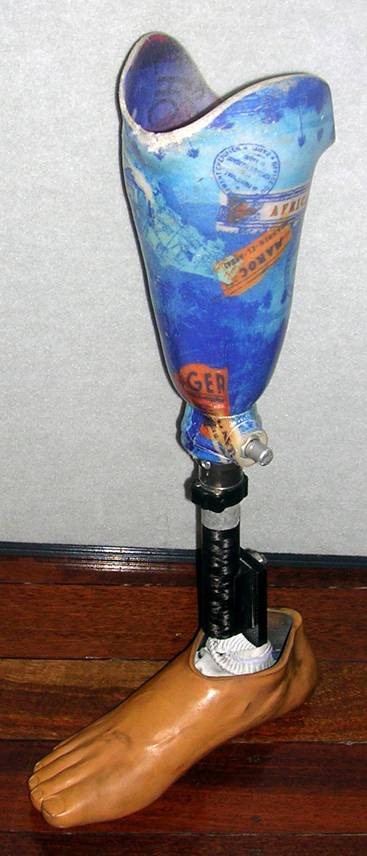
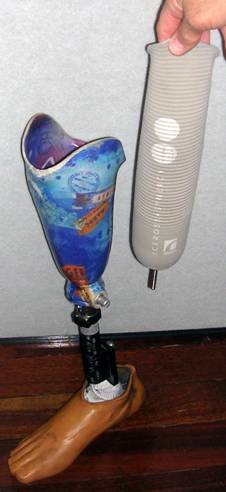
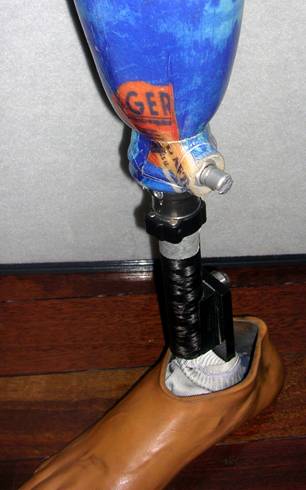
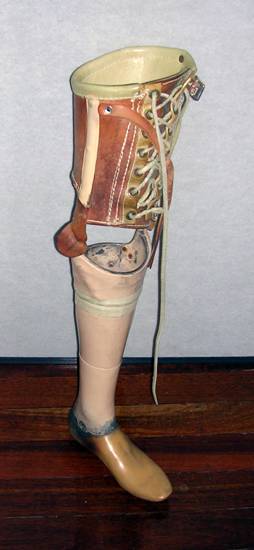
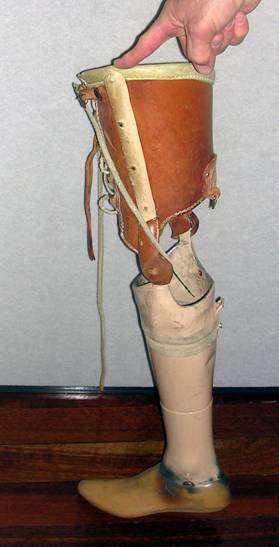
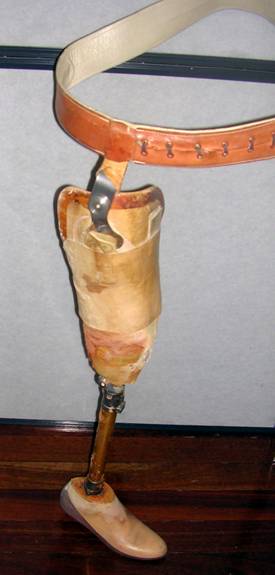
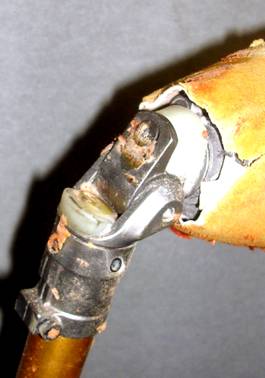
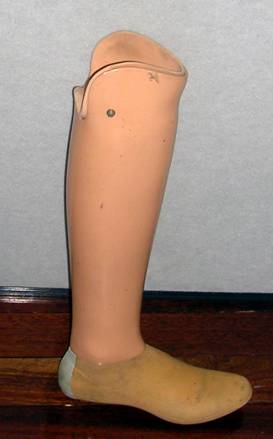
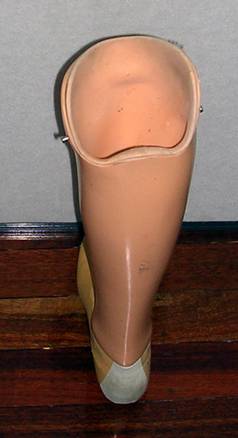
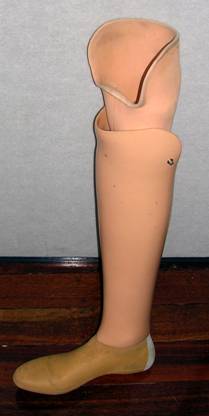
-o0o-